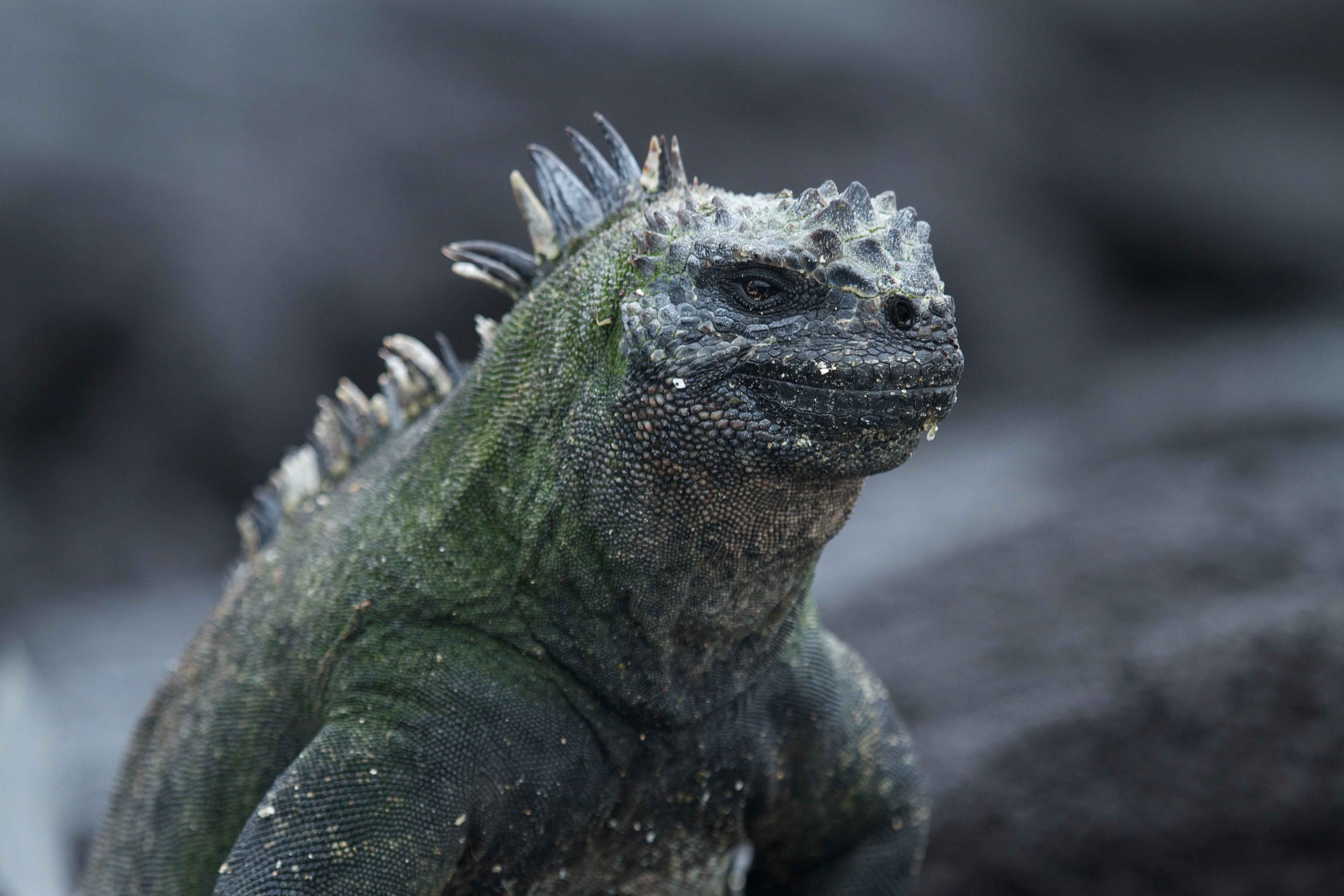 |
| Marine Iguana Photo by Brian Gratwicke |
Marine Iguanas can be found on the Galapagos Islands. The Galapagos Islands are a volcanic island chain off of the northwest coast of South America. These islands are home to some of the rarest and most unique endemic species on the planet. One of these endemic species is the Marine Iguana. These creatures are the only iguanas on Earth that have adapted to living on the shores of, and feeding in, the ocean.
They have several features that distinguish them from land iguanas. They have short, snubbed noses and flat tails. They have longer and sharper claws than other iguanas. Larger Maine Iguanas (mostly males), have the ability to dive and stay underwater for more than 30 minutes. They are able to dive in the cold water, despite being cold blooded, because these iguanas have the ability to slow down their heart rate and restrict blood flow in order to preserve heat. The smaller Marine Iguanas are unable to do this because they are not able to retain heat as well as the larger ones.
All of these unique features serve an important purpose for the Marine Iguana. The long, sharp claws are great for clinging to the lava rocks that line the shores of the Galapagos islands. If Marine Iguanas didn’t have these, they could be knocked off of the rocks by waves. Their snubbed noses help them scrape the algae that they eat off of the lava rocks. Their long flat tails make it easier for the Marine Iguanas to swim. Lastly the larger ones’ ability to dive and stay under water for long periods is allowing them to eat for longer times before basking and it allows them to search for food further from shore.
Unlike many endemic species of the Galapagos, Marine Iguanas can be found on every island of the Galapagos archipelago. All of these iguanas are of the same species, but they do differ from island to island. One example of these differences is coloration. All baby Marine Iguanas are black, as are many of the adults. However, on some of these islands there are examples of bright red or green Marine Iguanas. Variations in the size of these iguanas from island to island have been noted as well.
Marine Iguanas live peacefully together for around ten months out of the year. The other two months they are breeding. While the males are trying to find mates they display territorial behavior and will fight with one another for hours. Once the males have found mates and it is time for the females to nest, it becomes the female’s turn to become aggressive with each another.
Interesting Facts About Marine Iguanas
-Marine Iguanas can shrink. When there are major food shortages these animals can and do shrink. What is interesting about this fact is that they not only get thinner, but they also lose a significant amount of length.
-Marine Iguanas crowd together in large groups on the shores of the Galapagos at night to keep warm.
-Marine Iguanas sneeze salt. Special glands collect the salt when the animal takes in seawater while feeding. Every so often they get rid of the built up salt by sneezing. These salt bogeys often land right back on the iguanas head, where they dry up and turn the iguanas head white.
-They are the only iguanas on Earth that can feed in the ocean and depend on it for food.
These iguanas are not endangered, but they are vulnerable to changes in the ocean’s temperature. Also, animals that have been introduced to the islands, such as cats and dogs can and do feed on these iguanas. If these introduced species are kept under control and the currents in the area do not change, these interesting creatures may be around for a while yet.
Sources
Marine Iguanas, retrieved 6/15/09, geocornell.edu/geology/GalapagosWWW/MarineIguanas.html
Galapagos Marine Iguanas, 2002, retrieved 6/15/09, kidcyber.com.au
No comments:
Post a Comment